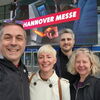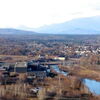Processing Your Payment
Please do not leave this page until complete. This can take a few moments.
- News
-
Editions
-
- Lists
-
Viewpoints
-
Our Events
-
Event Info
- Business Leaders of the Year Reception 2025
- Women's Leadership Forum 2025
- On the Road with Mainebiz in Bethel
- Health Care Forum 2025
- On The Road with Mainebiz in Greenville
- On The Road with Mainebiz in Waterville
- Small Business Forum 2025
- Outstanding Women in Business Reception 2025
- On The Road with Mainebiz in Bath
- 60 Ideas in 60 Minutes Portland 2025
- 40 Under 40 Awards Reception 2025
- On The Road with Mainebiz in Lewiston / Auburn
- 60 Ideas in 60 Minutes Bangor 2025
Award Honorees
- 2025 Business Leaders of the Year
- 2024 Women to Watch Honorees
- 2024 Business Leaders of the Year
- 2023 NextUp: 40 Under 40 Honorees
- 2023 Women to Watch Honorees
- 2023 Business Leaders of the Year
- 2022 NextUp: 40 Under 40 Honorees
- 2022 Women to Watch Honorees
- 2022 Business Leaders of the Year
-
-
Calendar
-
Biz Marketplace
- News
- Editions
- Lists
- Viewpoints
-
Our Events
Event Info
- View all Events
- Business Leaders of the Year Reception 2025
- Women's Leadership Forum 2025
- On the Road with Mainebiz in Bethel
- Health Care Forum 2025
- On The Road with Mainebiz in Greenville
- + More
- On The Road with Mainebiz in Waterville
- Small Business Forum 2025
- Outstanding Women in Business Reception 2025
- On The Road with Mainebiz in Bath
- 60 Ideas in 60 Minutes Portland 2025
- 40 Under 40 Awards Reception 2025
- On The Road with Mainebiz in Lewiston / Auburn
- 60 Ideas in 60 Minutes Bangor 2025
- - Less
Award Honorees
- 2025 Business Leaders of the Year
- 2024 Women to Watch Honorees
- 2024 Business Leaders of the Year
- 2023 NextUp: 40 Under 40 Honorees
- 2023 Women to Watch Honorees
- 2023 Business Leaders of the Year
- + More
- 2022 NextUp: 40 Under 40 Honorees
- 2022 Women to Watch Honorees
- 2022 Business Leaders of the Year
- Nomination Forms
- Calendar
- Biz Marketplace
Digital 'story maps' help market Bangor as cultural destination
 Courtesy / City of Bangor
The Bangor Opera House, which is today home to Penobscot Theatre, is one of a number of cultural sites included on “Bangor: A Culture of Places StoryMap,” an online feature created by the Commission on Cultural Development from its cultural asset survey.
Courtesy / City of Bangor
The Bangor Opera House, which is today home to Penobscot Theatre, is one of a number of cultural sites included on “Bangor: A Culture of Places StoryMap,” an online feature created by the Commission on Cultural Development from its cultural asset survey.
Bangor will soon be using "story maps" to market the city as an arts and culture destination.
Story maps integrate electronic images, narratives and GPS coordinates to design customized, digitally available walking and driving tours. Bangor’s Commission on Cultural Development is developing the map program and is now creating a database of cultural assets that will feed the tours.
One of the commission’s charges was to maintain a database of Bangor’s cultural assets, such as statues and historical architecture. Last year, the commission reviewed the survey and found it incomplete and not in a user-friendly format.
“We brainstormed about how to bring this listing into the 21st century,” the city’s downtown coordinator and cultural liaison, Betsy Lundy, told Mainebiz.
Bangor’s GIS administrator, Patrick Cowan, created an app to gather information about Bangor’s attractions. The city then hired an independent contractor who spent months touring Bangor to photograph and capture GPS coordinates of cultural sites; information about them will be added in the future.
“We’ll continue to build on that,” Lundy said. “Then we thought, ‘How can we turn this information into something that’s usable for people who visit Bangor?’ We looked at the concept of story maps.”
The digital story maps will include things like historical sites, important architecture, museums, galleries and public art. The app will suggest routes based on type of asset, such as a gallery tour.
“That will be available for the public, so they can take walking or driving tours,” she said. “It becomes a marketing tool for Bangor.”
The plan is to have the first three story maps online before the end of June, in time for the summer’s influx of tourists, she said.
The first version of the project can be seen as a website called “Bangor: A Culture of Places,” posted last October and highlighting sites like the Darlings Waterfront Pavilion and the Paul Bunyan Statue.
The commission is also working to spread awareness of “ARTober.”
ARTober was created in 2015, when the city of Bangor designated October as the “Month of the Arts” to celebrate the city’s diverse and creative culture. Last year, organizations, businesses and individuals staged more than 60 official events, with unofficial events bringing the number closer to 100. They included art shows, movie screenings, dance, music performances and workshops.
“The idea is to let people know that every day of the week there are amazing arts and culture opportunities happening in Bangor, gathering together all of the rich options that exist already, packaging them up and putting them in front of people to pique their interest,” said Lundy.
“The city recognizes the arts as an economic driver in Bangor. October is typically a little slower. People will come to see the arts, go out for dinner, maybe pop into a shop.”
Growing arts scene
Bangor has been seeing new arts activity over the past few years, she added. That includes the establishment of the Bangor Arts Exchange and the development of artist studios in the upper stories of downtown buildings.
The commission’s plans for 2020 include increasing visibility of the arts and culture in Bangor, particularly those funded by the commission’s grant program, and focusing energy on better recruitment and advertising of ARTober events.
Grants in 2019, said Lundy, included funds for new works such as a hip-hop video by Zakariah Allaf, a Syrian immigrant to Bangor, about the experience of assimilating.
Another new work was construction of a Lego replica, still underway, of the Bangor Public Library. The artist, Beckette Mundell, is 11 and the youngest awardee in the grant program. He previously made a Lego replica of Bangor City Hall, which is on display on the third floor.
Other awardees include Penobscot Theatre Co. for its production of “Safety Net,” a play about the opioid crisis that will also include public service events, said Lundy. Funds also support the Bangor Symphony Orchestra’s free programming and Launchpad’s open mics.
“There are amazing things that happen here in Bangor,” said Lundy. “Without the mechanisms for singing the city’s praises, people aren’t aware of it. That’s the goal of the cultural asset survey and ARTober: to say, ‘Hey, all of this is happening here.’”
A study in 2017 by Americans for the Arts, a national nonprofit organization for advancing the arts, found that Bangor's nonprofit arts and culture sector is a significant industry generating $10 million in annual economic activity.
The spending including $3.4 million by nonprofit arts and cultural organizations and $6.6 million in event-related spending by their audiences, supporting 312 full-time equivalent jobs, generating $6.2 million in household income to local residents, and delivering $1.1 million in local and state government revenue.










0 Comments